#qinling bear
Text

bears
#art#doodle#chibi#digital art#bears#silly#black bear#grizzly bear#panda bear#polar bear#sloth bear#tibetan blue bear#sun bear#asian black bear#spectacled bear#qinling bear#kodiac bear#grolar bear#pizzly bear#kermode bear#spirit bear#golden moon bear#otso mythology#mythology#🐻#🐻❄️#🐼
2K notes
·
View notes
Text
qinling pandas are sooooo underrated. i love them so dearly.
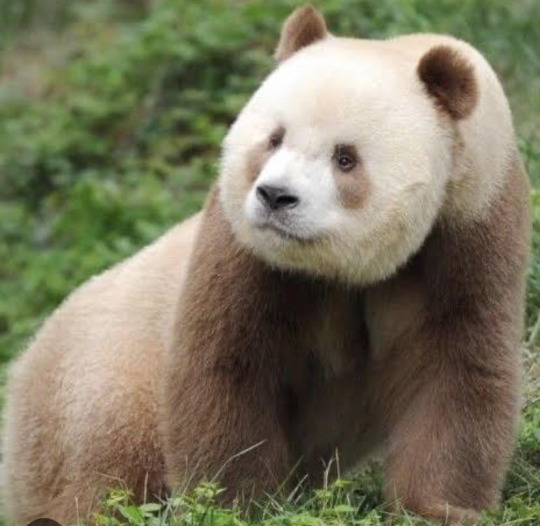
13 notes
·
View notes
Photo
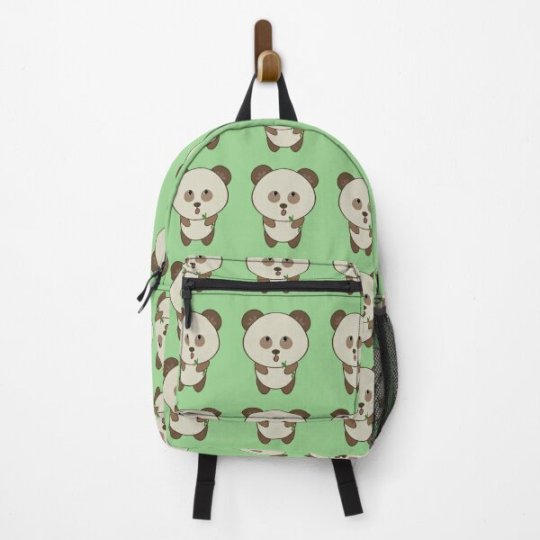

(via Qinling Panda Backpack by Day10Machine)
0 notes
Text
Madoka Magica Episode 12 Girls

Have I posted these before?
Anyways, I made art for each of the non-Holy Quintet girls that appeared in some capacity, with extras!
First are the girls Madoka saved (Bear girl given the name Kumaru, Viking girl given the name Signe, Tibetan girl given the name Lhamo, Savannah girl given the name Kande, and the Volcano girl given the name Vita).
Then are my takes on the magi form for the hijab girl (Named Khadija), the train girl (Named Heidi), plus Cleopatra and Himiko's.
There is also my takes on Walpurgis familiar/endcard girls designed by Inu Curry (Named Lotte, Lulu, Asami, Rosa, Qinling, and Aerith in that order.)
And finally are hypothetical human forms of the bird witch (Rosaline) and the fluffy moth witch (Circe), Tamaki Azumi and Toku Nagataru respectively.
... They should really add these characters to Magia Record, not my personal takes, just the original characters in general.
#madoka magica#magia record#puella magi#kumaru takahiro#bear girl#signe haralddottir#viking girl#lhamo#tibetan girl#kande ashia#savannah girl#vita#purple volcano girl#khadija asif#heidi olsen#cleopatra#priestess himiko#rosaline#circe#tamaki azumi#toku nagataru#lotte kinder#lulu lala#asami kikuzaki#rosa marswell#qinling xu#aerith medley
13 notes
·
View notes
Note
Hi what colors can bears be? I know they can be brown, black, grey, and white (polar bear). Can there be bears with spots? Or stripes? (Is red panda a bear?) What are some unusual bear colors and patterns please? (Sorry for bad English)
hi anon, thanks for the ask. and your english is great! :]

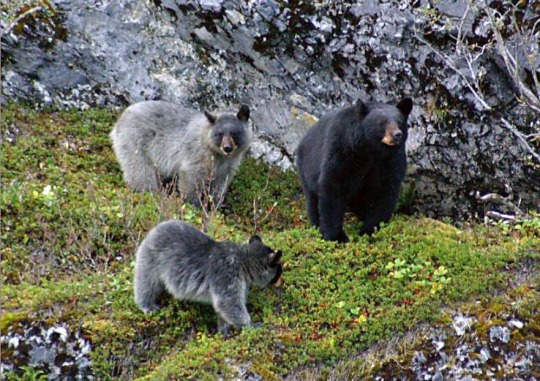
x
black bears are the most diverse of all bears when it comes to coloration. there can be blonde, cinnamon, brown, blue-grey, and even white morphs.

x
there is a subspecies of giant panda known as the Qinling panda. these pandas are smaller and have white and light brown fur instead of white and black fur. these pandas are extremely rare, and weren't recognized as an actual subspecies until 2005.

x
red pandas are not bears. they're in their own family (Ailuridae). they are kinda bear shaped, though! and they have really fluffy ringed tails.
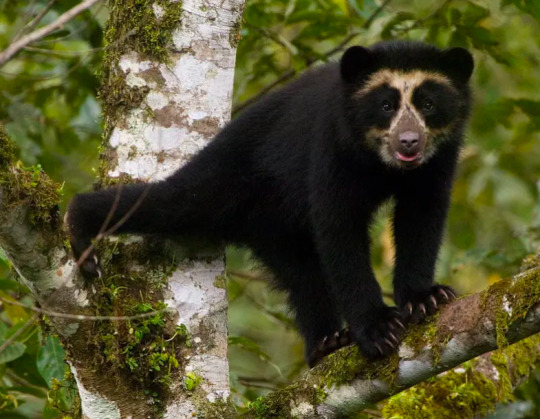
x
some spectacled bears have glasses-shaped markings around their eyes, hence their names. these markings vary from bear to bear, though, and not all spectacled bear have the signature 'spectacles.'

x
252 notes
·
View notes
Text
Animals I Want in the Sylvanian/Calico Critter Universe
You got the cats, you got the dogs and you got the rabbits. Then, you got the bears, rodents and others that don't fit into said categories.
However, this list is comprised of animals that I want made into families. More will definitely added (or deleted) over time
Rhino (my #1 most wanted family)
Unicorn (all they need to do is put the horn on the pony family)
Arctic Fox
Ferret
Baboon
Gorilla
Donkey
A brown cow family (chocolate milk for the win!)
Qinling panda (brown panda bears)
Bulldog
Rottweiler
Red/Blue Heeler (for the Bluey fans!)
Tiger
Bluejay
Zebra
Turtle
Alligator/Crocodile
Snake/Cobra (idk about the arm/leg situation tho)
Mongoose (gotta have the snake's rival!)
Gecko (15 mins could save you 15% or more on car insurance)
Wolf (no the Husky family doesn't count!)
Bat (give me my gothic vampire family pls)
Angora rabbits (how have we not have rabbits with the fuzziness of the Persian cat families yet?)
Bald Eagle (for my fellow Americans)
Turkey (Thanksgiving anyone?)
Komodo dragon
Porcupine (would they be too similar to the Hedgehogs?)
Macaroni penguin (pls let their surname be Macaroni!)
5 notes
·
View notes
Text
Giant Panda
Scientifically known as: Ailuropoda melanoleuca (Ailuro meaning cat, poda meaning foot, melano meaning black, leuca meaning white, black and white cat foot!)

(Look at 'em go!)
AKA: Panda bear, giant bear cat (In the original Taiwenese langague: 大貓熊) avoid using just 'panda' unless other people know what you're talking about, not only does it confuse things with the red panda, but the red panda is more accepted to have that name (however I'd recommend avoiding use of it with the red panda too)

(This species has two subspecies, pictured left: the rarer brown panda/Qinling panda, A. m. qinlingensis, which inhabits only the Qinling mountains. Pictured right: the nominate more well known subspecies A. m. melanoleuca)
Because of their somewhat poorly adapt oringinally carnivourous digestive tracts panda bears get little energy from their herbivorous diet, most of their energy comes from the shoots of bamboo, so they eat a LOT in shoot season (April to August) to be prepared prepared for needing to eat the less useful bamboo leaves.
Some people call them stupid beacuse of this (they are big dummies, just for different reasons) but all I see is a highly adapt animal fill a niche unique to its family and order, their stomachs are made special to eat lots of things very quickly so they can get enough energy, their round faces are full of muscles so that their jaws can crush the hard plant, they are comparable to the vegetarian gorilla in their adpations for a sedentary, low energy, lifestyle.

(Wild giant pandas will sometimes eat meat, fruits, honey, and more, but still favor bamboo)
They end up with a lot of cyanide, from their diet, the lethal dose of cyanide in most unadapt animals is 2 miligrams for every kilogram the animal weighs, adult panda bears weigh 100 to 115 kilograms on average, consuming an average of 54.8 to 66.1 miligrams of cyanide in a DAY, but 80% of it gets metabolized into the safer thiocyanate and then urinated out, the other 20% is dealt with through more minor pathways.
They also totally ARE bears! Here the phylogenetic tree!
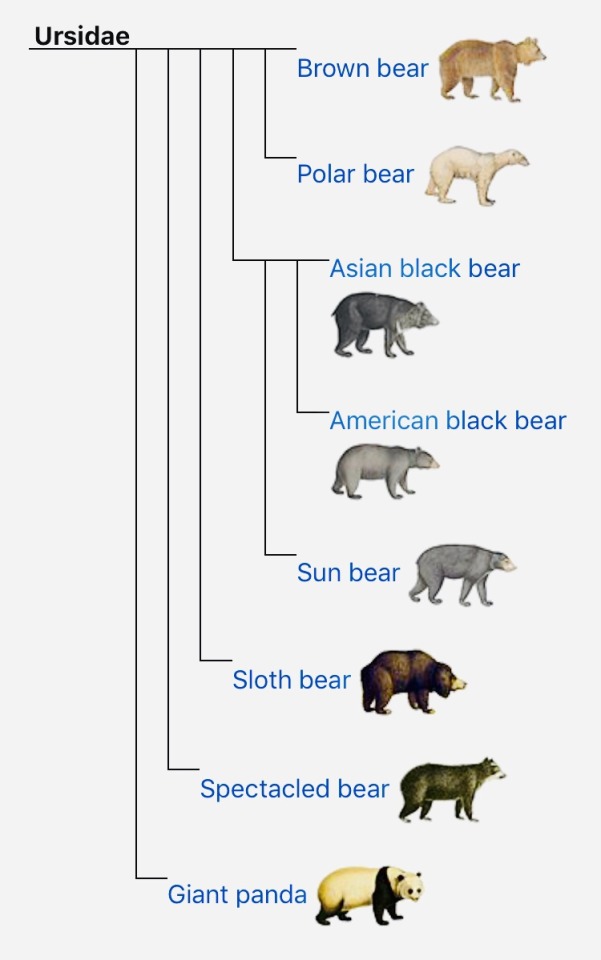
(The phylogenetic tree)
They are part of Ursidae, the famioy of bears, but NOT Ursus, the genus containing polar bears, brown bears, Asian black bears, and American black bears, they're as much a bear as the Sun bear is!
But more than that they're living fossils! Having broken off from the common ancestor loooooong ago, they are equally distant from every extant bear due to that.


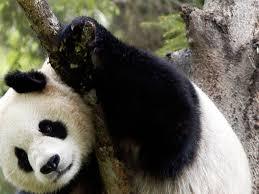
(Panda bears are solitary in the wild, and make a lot of use of olfactory comunication such as pheromones.)
Some have been angry (?) About the conservation efforts put into giant pandas, folks are starting to point out the obvious bias to cute (or something comparable to cute) and instead of trying to help not-normally-considered-cute animals, some get mad at the cute animals getting protection, no, don't do that, it's ridiculous, we should be doing more to help more animals, not doing less!
The giant panda was considered endangered by the IUCN and China, but has since been changed to vulnerable by both, we've made great strides in helping them, and in helping them we created nature reserves which also help to protect snow leopards, red pandas, golden-snub-nosed-monkeys and more! Plants too!
So don't be mad about what we haven't done, be proud of what we have! And make use of the present time and future to do what we've failed to, no matter how little the contribution of the individual may be, it means something, something glorious.

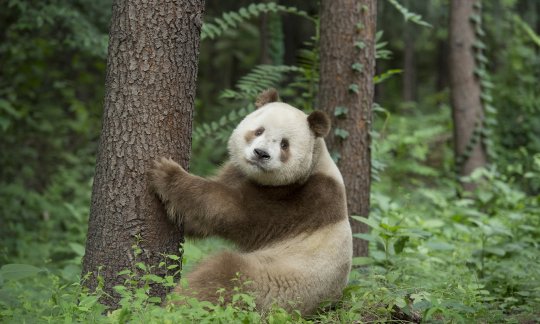


(More brown pandas! There's something so cool about animals with unusual-for-their-species color palates)
Ah, finally, a normal post.
#animal photography#wild animal#animal facts#animal fact#cute animals#animals#panda#Brown panda#Panda facts#cute#fluffy#Please point out any typos or erroneous information#SpeciesRunDown
0 notes
Text

Among the Flowers. Martin Gregus watched this polar-bear cub playing in a mass of fireweed on the coast of Hudson Bay, Canada. Every so often, the cub would take a break from its fun, stand on its hind legs, and poke its head up above the high flowers to look for its mother. © Martin Gregus/Wildlife Photographer of the Year

A Golden Huddle. Two female and one male golden snub-nosed monkey huddle together to keep warm in the extreme winter cold. Threatened mainly by forest loss and fragmentation, this endangered species is confined to central China. Restricted to living high up in the temperate forests, these monkeys—here in the Qinling Mountains, in Shaanxi province—feed mostly in the trees, on leaves, bark, buds, and lichen. © Minqiang Lu/Wildlife Photographer of the Year

Caribbean Crèche. Claudio Contreras Koob was lying down on the mud a safe distance from a breeding colony of Caribbean, or American, flamingos, in Ría Lagartos Biosphere Reserve, on the Yucatán Peninsula, Mexico. It was June, and the flamingo chicks had already left their nests and were in crèches. These crèches are always guarded by adult birds, so when the chicks began to approach Koob, the adults surrounded them and gently led them back to the colony. © Claudio Contreras Koob/Wildlife Photographer of the Year

Head to Head. The spectacle of two female musk oxen attacking each other surprised Miquel Angel Artús Illana. For four days, he had been following a musk-ox family in Norway’s Dovrefjell-Sunndalsfjella National Park—a male, a female, and three calves. On a beautiful high plateau, another similar-size family of musk ox appeared. Expecting a male head-to-head (it was September and the females were in heat), he was disappointed when the two males came to an immediate understanding and the weaker one backed off. It was then that the two females began their short but intense fight. © Miquel Angel Artús Illana/Wildlife Photographer of the Year

Red and Yellow. Near Rausu port, on the Japanese island of Hokkaido, several hundred glaucous-winged gulls waited for the return of fishermen. It was the beginning of March and freezing, and the air was full of the raucous calls of the gulls overhead. Some of the birds began to settle, keeping their eyes on the horizon. Focusing on one bird, Chloé Bès composed a minimalist portrait, highlighting the eye and the beak. The red spot on the beak develops when gulls are adult and is in part a reflection of their health. © Chloé Bès/Wildlife Photographer of the Year

Holding On. This leopardess had killed a monkey in Zambia’s South Luangwa National Park. The monkey’s baby was still alive and clinging to its mother. Igor Altuna watched as the predator walked calmly back to her own baby. Her cub played with the baby monkey for more than an hour before killing it, almost as if it had been given live prey as a hunting lesson. © Igor Altuna/Wildlife Photographer of the Year

World of the Snow Leopard. Against a backdrop of the spectacular mountains of Ladakh in northern India, a snow leopard has been caught in a perfect pose by Sascha Fonseca’s carefully positioned camera trap. Thick snow blankets the ground, but the big cat’s dense coat and furry foot pads keep it warm. Fonseca captured this image during a three-year bait-free camera-trap project high up in the Indian Himalayas. © Sascha Fonseca/Wildlife Photographer of the Year

In a Flap, Queensland, Australia 🇦🇺! ‘The far eastern curlew is the largest migratory shore bird in the world, and is listed as critically endangered in Australia. They start their life in Russia and north-eastern China before flying to Australia, where they rely on the intertidal mudflats for food and habitat. This image was taken in Wellington Point, Queensland, three hours before the high tide.’ Photograph: Manoj Kutty Padeettathil Manilal

Storm Brewing, Mozambique 🇲🇿! ‘Rainy skies closing in on a local fisherman’s boat on Bazaruto Island, Mozambique.’ Photograph: Terry Dunnem
0 notes
Photo

Daily Bear Fact #7:
The Qinling panda became the first and only recognized subspecies of the giant panda in 2005. They’re distinguished from other giant pandas by their brown and white coloration.
562 notes
·
View notes
Text
watching a video about every species and subspecies of bear and trying not to cry
5 notes
·
View notes
Photo

🐼💜 A lovely sepia and very rare Qinling panda - and she knows how charming she is!
About real life: these very elusive bears live in the Qinling mountains in Shaanxi, and this color morph is eventually spotted. Also, the Qinling pandas are a bit smaller and have a slightly distinct eyes marking.
🍐 DA: https://www.deviantart.com/groundpear
🍐 FA: https://www.furaffinity.net/user/groundpear/
🍐 Telegram channel: https://t.me/GroundPearsGarden
🍐 Tumblr: https://groundpear.tumblr.com
0 notes
Text
Fun fact about bears:
Brown panda bears are a subspecies called Ailuropoda melanoleuca qinlingensis aka Qinling panda
They're extremely rare however and it was estimated to exist around 100 brown pandas in 2001
They seem to be slightly smaller than the black-and-white panda (that's why it's considered a subspecies) and they seem to be able to have offsprings with that more common panda (thought I couldn't find if the cubs survived long and had cubs of their own)
This one is Qi Zai!! He's the only brown panda that lives in captivity
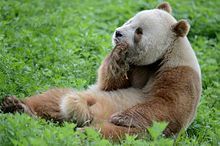
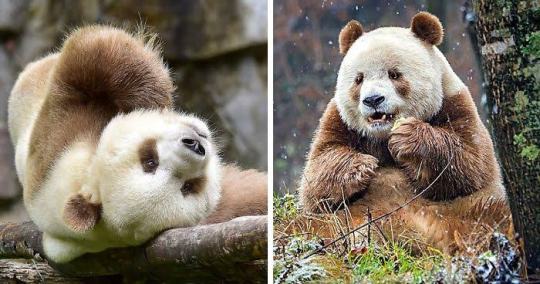
About golden moon bears, there's only one bear know with that fur color and it's Brandy, who's also a captive bear
She's 20 years old and you can see her next to the more common fur color they have


6 notes
·
View notes
Note
Pandas, talk now.
While they're regularly called bears (this is still under debate), they're considered folivore placental mammals. Because they're folivores, their main diet is bamboo shoots, but they can/will eat other foods such as fruits and sometimes even smaller birds. They used to live all throughout China (mostly central China) but because of deforestation, farming, and other human development, they've considered conservation-reliant, but because of human efforts they're now considered on the safer end of endangered. Not all pandas are in captivity, obviously, studies suggest around 1.6k pandas are living in the wild, but that number could even be in the 2ks and 3ks. There are 18 zoos across the world that aren't in China, spread across 13 countries. I don't remember where all of them are, but I know there's some in California and in Washington D.C. as I've been to both. While nationally, dragons are China's symbolic animal (as bald eagles are for the US), internationally pandas are used interchangeably. In a direct translation, "panda" literally means "bear cat." There have been many names for pandas (such as {these are translated} spotted bear and bamboo bear), but bear cat stuck. While pandas are usually depicted as black/gray and white, there are two subspecies or pandas, and one of them, the Qinling pandas, are actually brown!!
I have more info but I don't want to rant too much so here's random basic info!!
2 notes
·
View notes
Photo

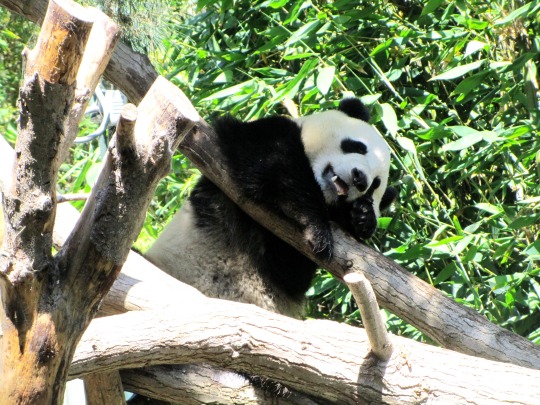

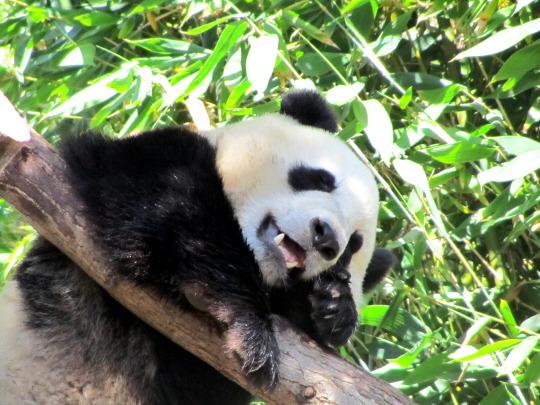
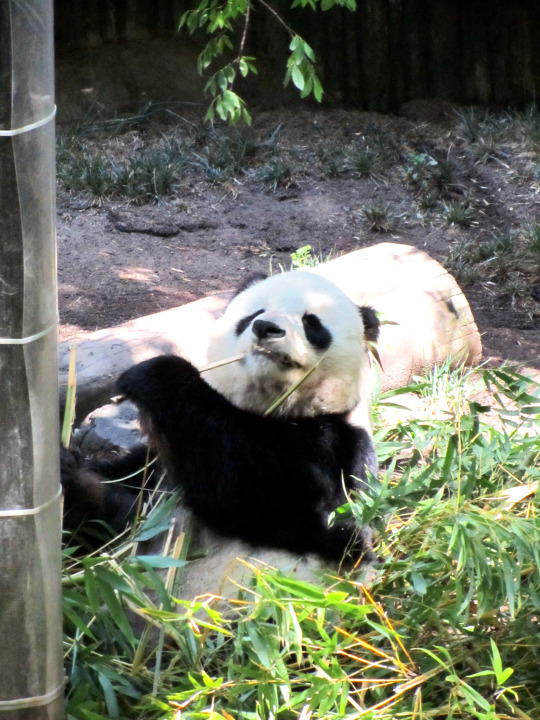
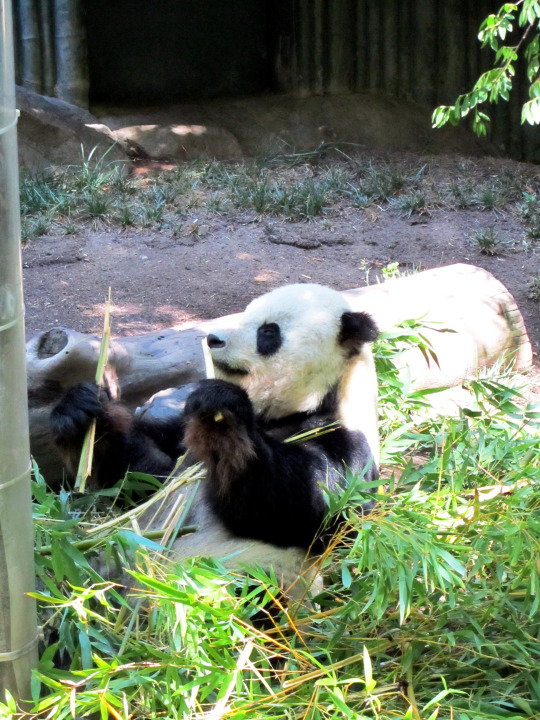

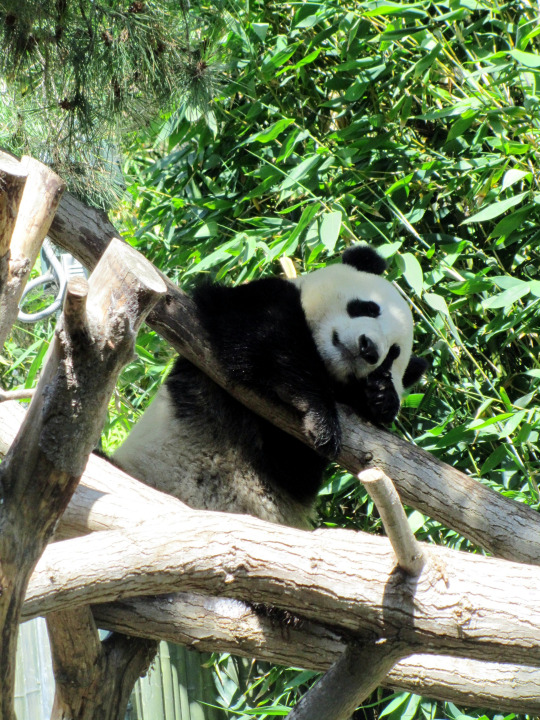

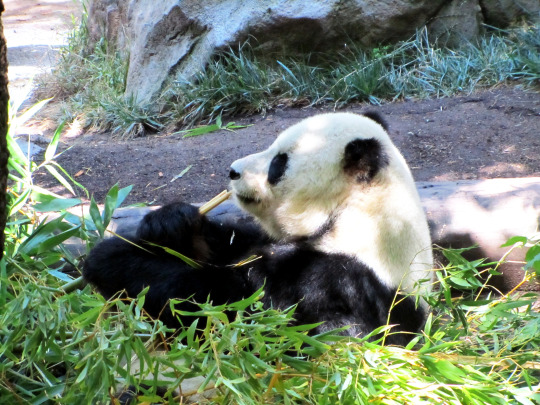
National Panda Day
National Panda Day, also known as Giant Panda Bear Day and Panda Day, celebrates the giant panda. It sometimes is also used to celebrate the red panda, although this is usually not the case, as red pandas already have their own holiday. The number of giant pandas in the wild has slowly been increasing since the 1970s, when there were only about 1000. As of 2020, there were about 1900 giant pandas in the wild, and about 300 in zoos. Still, the giant panda is considered to be vulnerable by the International Union for Conservation of Nature and Natural Resources (IUCN).
Years ago, giant pandas could be found throughout southern and eastern China, Myanmar, and northern Vietnam. Humans are their greatest threat, and the expansion of population and development has led to habitat fragmentation and loss and has limited them to six mountain ranges in the Chinese provinces of Sichuan, Gansu, and Shaanxi. Most live in cool, wet bamboo forests in the Minshan and Qinling mountains, between 5,000 and 10,000 feet above sea level. Establishing new reserves and extending existing ones is essential for preserving and rebuilding the panda population. Close to two-thirds of the world's pandas are now protected in China's reserves.
Giant pandas are curious and playful. They are usually peaceful and live solitary lives away from confrontation. Not many predators go after them, but they can fight back if needed. They have powerful strength and jaws, and teeth just like other bears, which allow them to protect themselves. Panda cubs receive the brunt of predators' attacks and are sometimes preyed on by snow leopards, yellow-throated martens, and jackals.
Giant pandas grow to about five feet in length and to as much 275 pounds in weight, being similar in size to black bears. They are known for their black and white camouflage-providing coat, with the black fur being around their eyes and on their legs, shoulders, muzzle, and ears. Female pandas reach sexual maturity around the age of four or five, while male pandas reach it around the age of six or seven. Pandas don't breed for life and instead have multiple partners. They only associate with their partners for two to four days, and then go back to their solitary ways. They mate in spring, and the gestation period averages 135 days.
Pandas usually give birth to one cub at a time and can have a cub about once every two years. Cubs are tiny at birth, weighing about 3 to 5 ounces—being about the size of a stick of butter. They depend on their mothers at birth and are weaned at about 8 or 9 months. They usually stay with their mother until she becomes pregnant again. Their lifespan is about 14 to 20 years in the wild, and 30 years in captivity.
Pandas can swim and climb, but don't hibernate. They eat almost nothing but stems, leaves, and shoots of various types of bamboo. They eat for around 12 hours a day and may consume as much as 28 pounds of bamboo during that time. One reason they have to eat so much is that bamboo is relatively low in nutrients. If there isn't enough bamboo around, pandas will supplement their diet with other foods, such as small animals.
The popularity of giant pandas rose in the twentieth century. Fashion designer Ruth Harkness brought a baby panda, Su-Lin, to the United States in 1936, which helped raise awareness and concern for pandas. In the early 1960s, the first panda reserves were built in China, and the hunting of pandas was outlawed. In 1979, the World Wildlife Fund (now the World Wide Fund for Nature) and China signed an agreement to work together on conservation efforts, including efforts to save the panda. The giant panda is now a symbol of nature conservation and of China, and we celebrate it today, on National Panda Day.
How to Observe National Panda Day
Celebrate pandas today! Here are some ideas to get you started:
See giant pandas—including famous ones—at zoos or in the wild at a reserve.
Support an organization such as the World Wide Fund for Nature or Pandas International.
Watch a movie or documentary about giant pandas, or read something about them.
Check to see if there are any National Panda Day events you could attend or celebrations you could participate in. For example, Disney Parks has marked the day during past observances.
Source
#NationalPandaDay#National Panda Day#16 March#San Diego Zoo#travel#California#Balboa Park#West Coast#summer 2011#original photography#animal#tourist attraction#landmark#GiantPandaBearDay#Giant Panda#flora#fauna#bamboo#eating#tree#USA#national day#Ailuropoda melanoleuca
2 notes
·
View notes
Text
Wild pandas have been caught mating on film for the first time - and it's not pretty
https://sciencespies.com/nature/wild-pandas-have-been-caught-mating-on-film-for-the-first-time-and-its-not-pretty/
Wild pandas have been caught mating on film for the first time - and it's not pretty
Our love of pandas has helped these cute and fuzzy giants bounce back from dwindling numbers. But despite all the attention we’ve showered them with and the intense research and effort to get them to breed, no one had ever managed to film how this happens in the wild. Until now.
It took a three year trek through China’s Qinling mountains and close collaboration between filmmakers, park rangers and scientists to capture the world-first footage of giant panda’s (Ailuropoda melanoleuca) courtship and mating in the wild.
“Over the mating season, their territory greatly overlaps and they travel for tens of kilometres a day in search of the right mate,” filmmaker Jacky Poon told PBS. “Their calls would echo the whole mountain.”
youtube
The footage may provide a long-sought clue to why it’s been so challenging to get pandas to breed in captivity.
The video reveals intense competition between two pursuing males – including ferocious grumbling moans, scent marking and squabbles with each other and the female. The males also hold the female ‘hostage’ at times, as the spring snow descends around them.
Their disturbing courtship lasted an entire week before the female was ready to mate, which suggests these behaviours may trigger the female’s ovulation. Circumstances not so easy to emulate in captivity.
“It’s similar in other bear species,” the narrator explains.
And this isn’t the first time a threesome of this usually solitary and highly territorial species has been observed in the wild – the first observation was noted in detail back in 1981, again with two males in pursuit of a female.
Research has also suggested when pandas get to choose between partners in captivity their dalliances are twice as successful.
Who can blame them for wanting options?
The footage forms part of a PBS documentary Nature – Pandas: Born to Be Wild.
#Nature
1 note
·
View note
Text
March 16, 2022 - National Panda Day
March 16, 2022 – National Panda Day
Every year on March 16, we honour the fluffiest, bamboo-munching bears that are a source of national pride in China. The panda has two subspecies: the Giant, black and white panda, and the ‘Qinling panda’, a much smaller, brown variety found in 1985 in the mountain ranges of China’s southern Shaanxi Province. Giant pandas can only be found in the wild in China’s isolated mountainous regions.…

View On WordPress
0 notes